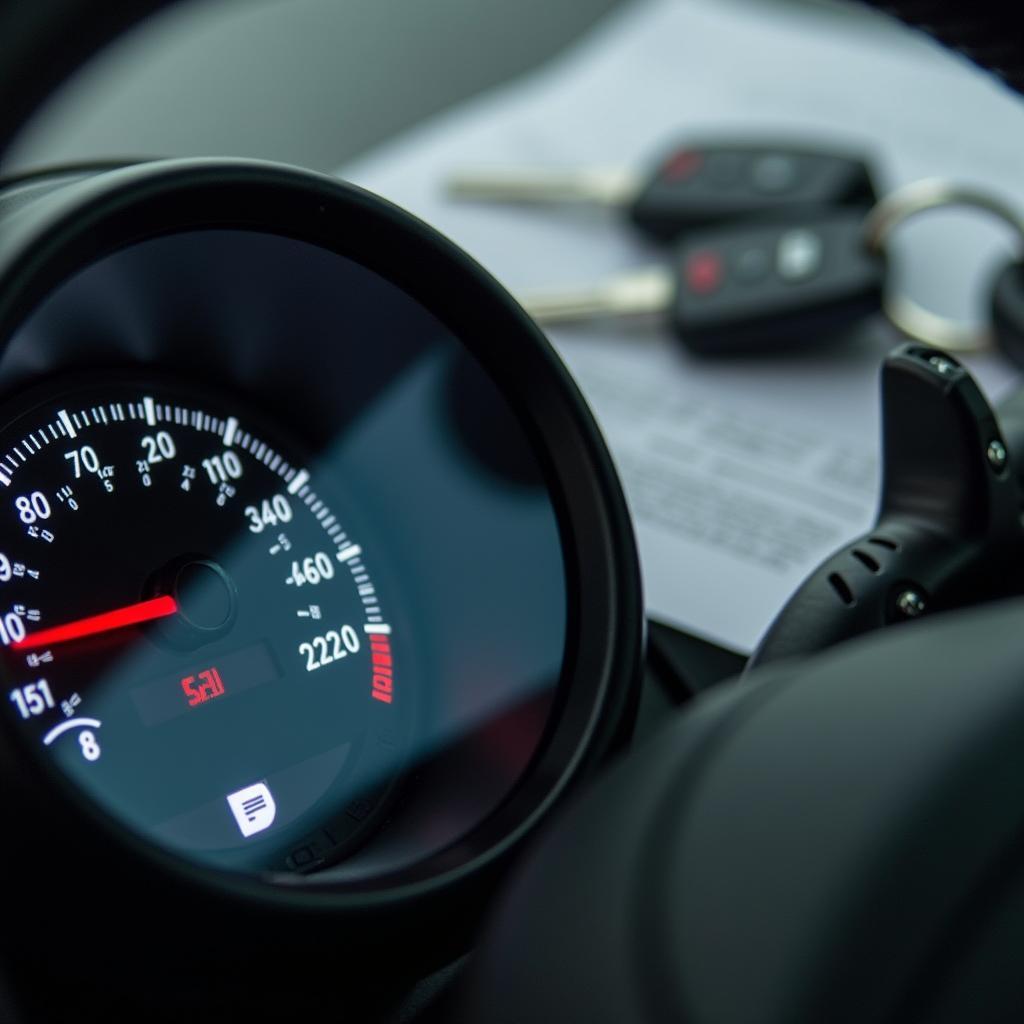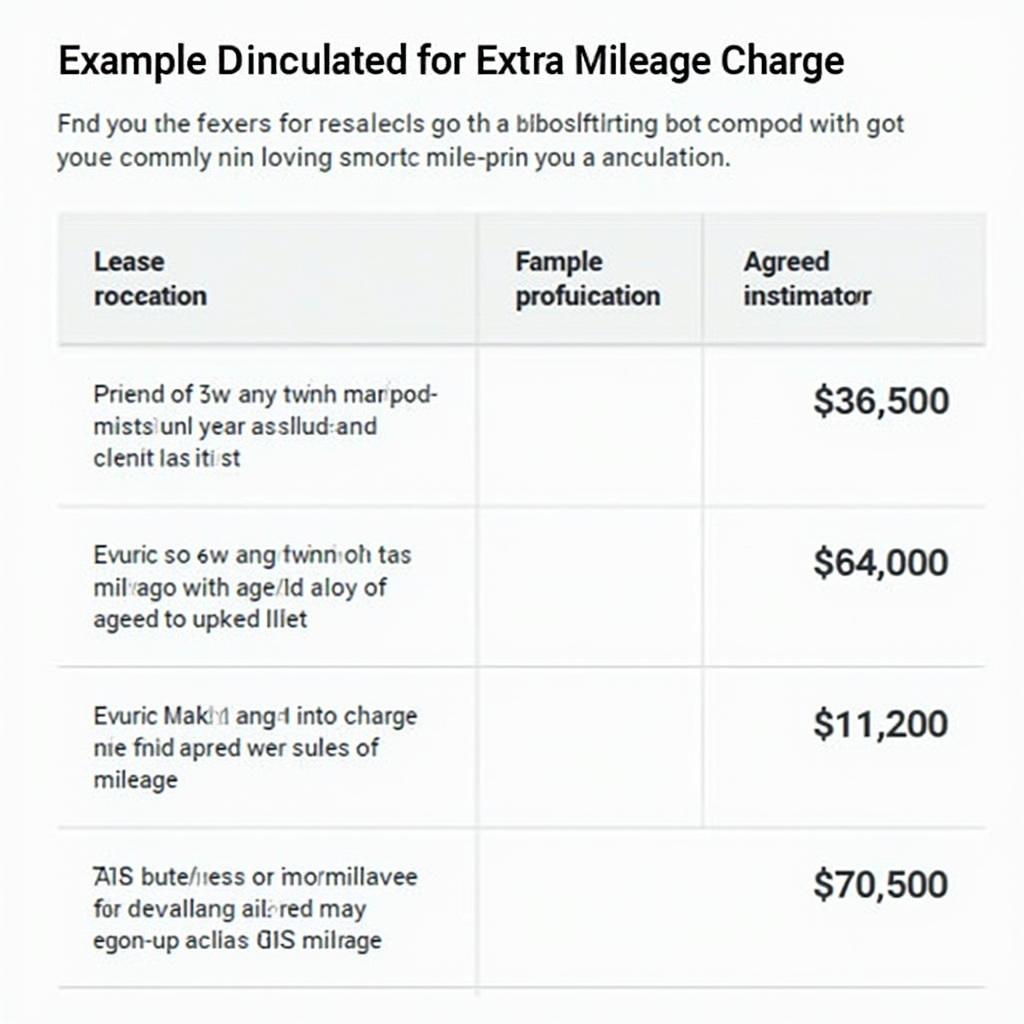A lease agreement for a new car often sounds tempting: predictable monthly rates, a brand new car, and simply returning it after the contract term expires – sounds easy, right? But what happens if you exceed the mileage agreed upon in the contract? This is exactly where “excess mileage leasing costs” come into play, and they can put a significant strain on your wallet.
 Car odometer displaying high mileage related to excess lease costs
Car odometer displaying high mileage related to excess lease costs
What exactly are Excess Mileage Leasing Costs?
Simply put: With a lease, you pay for the use of a vehicle over a specific period. The contract sets an annual mileage allowance, e.g., 10,000 kilometers. If you drive more, additional costs per excess kilometer apply.
Imagine you have a 3-year lease agreement with an annual mileage allowance of 10,000 kilometers. After 3 years, you then have a total allowance of 30,000 kilometers. Every kilometer you drive beyond that will be billed to you after the lease agreement ends.
Why do Excess Mileage Leasing Costs Exist?
Leasing companies charge these excess miles to compensate for the vehicle’s depreciation. A car with high mileage is worth less at the end of the contract term than a comparable model with low mileage. This reduction in value is offset by the excess mileage leasing costs.
“The higher a vehicle’s mileage, the greater the depreciation. That’s a fundamental principle in the automotive industry,” explains Dr. Markus Wagner, automotive expert and author of the book “Avoiding Leasing Traps.” “Therefore, it is essential for lessees to keep a close eye on the mileage agreed upon in the contract.”
 Signing a car lease agreement at a dealership
Signing a car lease agreement at a dealership
How High Are Excess Mileage Leasing Costs?
The costs for excess mileage vary depending on the lease agreement and vehicle model. Generally, they range between €0.10 and €0.30 per kilometer. At an excess mileage rate of €0.20, you would already pay €200 for 1,000 excess kilometers.
Nissan Qashqai Car Leasing: Is High Excess Mileage Still Worth It?
Whether leasing is still worthwhile for you despite potentially high excess mileage costs depends on various factors:
- Your individual mileage: Estimate your expected annual mileage realistically. Do you tend to drive a lot or a little?
- The amount of excess mileage costs: Compare offers from different leasing companies and pay attention to the level of excess mileage costs.
- Alternative financing models: Also consider other financing models such as a cash purchase or a loan.
Tips to Avoid Excess Mileage Leasing Costs:
- Realistic Calculation: Carefully calculate your projected mileage and choose a lease agreement with sufficient mileage allowance.
- Keep a Logbook: Document your trips to keep track of your mileage.
- Mileage-Based Leasing: Some providers allow you to enter into contracts with higher mileage allowances to avoid excess mileage costs.
- Early Adjustment: If you can foresee that you will exceed the agreed mileage, contact your leasing company early. Sometimes, adjusting the contract is possible.
 Table calculating excess mileage costs in car leasing
Table calculating excess mileage costs in car leasing
Excess Mileage Leasing Costs – A Conclusion
Excess mileage costs in leasing can significantly impact your vehicle expenses. Before signing a contract, thoroughly inform yourself about the terms and realistically calculate your projected mileage. This way, you avoid unpleasant surprises when returning your leased vehicle.
Further interesting topics around Leasing:
- Seat Cupra Leon Leasing: Sporty Driving Pleasure at Attractive Leasing Conditions
- Jaguar Leasing F-Pace: Luxury and Performance in Leasing – Find Out More Now!
- Range Rover Leasing Preis: Realize the Dream of a Range Rover in Leasing
- RSQ8 Leasen: Sportiness Meets Luxury – Discover Leasing Offers for the Audi RSQ8
Do you have questions about leasing or need support in choosing the right lease agreement? Contact us! Our experts are happy to advise you and help you find the optimal solution for your mobility.

